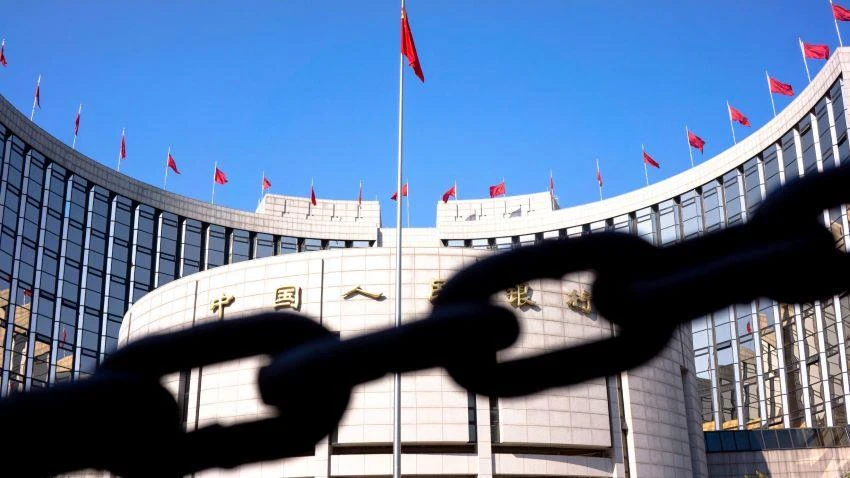
China's central bank set its daily yuan reference rate at 7.0039 to the dollar Thursday, crossing the 7 line for the first time in roughly 11 years and signaling resolve even as the U.S. cries foul over the weakening currency.
Market participants speculate that Beijing may keep pushing the rate to around 7.2 to 7.3 so as to alleviate the impact of the next round of American tariffs.
But while a weaker yuan will help exporters impacted by the drawn-out trade war, the People's Bank of China still must carefully balance these gains against the risks of runaway devaluation and capital flight.
The yuan can move only 2% in either direction from the daily reference rate on the mainland. So the rate, announced before trading starts each session, reflects the monetary authorities' wishes.
The authorities want a gradual weakening of the yuan, said Ken Cheung, senior Asian foreign exchange strategist at Mizuho Bank.
The Trump administration just labeled China a currency manipulator Monday, after the yuan weakened past the psychological threshold of 7 in Shanghai. Setting reference rates past that line could trigger further pushback from the U.S.
But the PBOC decided to go ahead. An official expressed confidence Monday in the bank's ability to keep the exchange rate "basically stable at an equilibrium and adaptive level." The yuan has since traded at a rate above 7 to the dollar.
The Chinese bank says it sets its daily reference rate based on the yuan's movements against a basket of currencies including the dollar, the euro and the yen. With the latest reference rate, it is likely showing that it is only tracking market movements in the currency market, not intentionally manipulating rates.
The central bank has been careful to keep the yuan's devaluation contained. Rapid yuan-selling has stopped for now, with the exchange rate hovering around 7.03 to 7.05 yuan to the dollar in Shanghai on Thursday. Market players say Chinese state-owned banks are engaging in swap deals that make it difficult to short the yuan, while there are moves to absorb the currency in the offshore market of Hong Kong.
A weaker yuan would buoy export-oriented companies standing to suffer from the next round of U.S. tariffs on China. "China can cancel out the impact if the yuan weakens to about 7.2 to 7.3 to the dollar," a market observer said.
On the other hand, a weak yuan means that dollar-denominated debt will weigh more heavily on Chinese companies, which could lead to a panicked sell-off of the Chinese currency.
And "recent moves may only be a start," the Institute of International Finance said in a report Thursday, with the exchange rate possibly going "from its 6.90 level before recent developments to near 7.30."
The PBOC cut rates unexpectedly in 2015, pushing down stock prices around the world. This time, it is trying to keep the situation from spiraling out of control.
Despite "recent volatilities driven by external uncertainties, I am quite confident the yuan will remain a strong currency," PBOC Gov. Yi Gang said Monday.
There is no guarantee that the yuan will soften gradually as the PBOC wants. More investors are selling the currency because they believe that the Chinese economy will lose even more steam after the new American tariffs take effect Sept. 1. Trade talks between the U.S. and China are at a standstill, so downward pressure on the yuan will grow in the short term, Cheung said.
Capital flight after the 2015 shock led the PBOC to push for a cap on cross-border yuan transfers. This caused significant problems for foreign companies, which could not send money earned in China back home.
Such restrictions were eased in the spring of 2017. "Nowadays, you almost never hear about companies unable to send money home," a source at a Japanese bank said. But there is concern that the PBOC could enact similar controls should the yuan plunge in value again.
Others question the bank's claims that 7 yuan to the dollar is an appropriate rate. According to calculations by Nikkei and the Japan Center for Economic Research, the equilibrium rate was 6.74 in the January-March quarter. The U.S. has since cut interest rates, and some in the market see the yuan as undervalued.




















